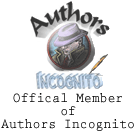Planning out a novel? Be sure to join my newsletter for a FREE plotting/revision roadmap, and check out the full series on plotting novels in a free PDF!
Over the last two weeks, we’ve looked at two plotting methods. One helped us parse our story into parts, the other helped us grow it from an idea. But a weakness of both is that neither really tells us what kind of events we need in a story—especially in the sagging middle.
The Hero’s Journey is based on the universal archetype work of Carl Jung, as applied by Joseph Campbell. Campbell studied myths, legends and tales from around the world, and observed that most of the stories followed a similar pattern. However, it was Christopher Vogler that applied the Hero’s Journey to writing (and film) technique and story structure in The Writer’s Journey.
I first learned about the hero’s journey in high school. We had this really cool interactive website—man, I wish I still had the URL . . . what? Why are you looking at me that way? Yes, we had interactive websites when I was in high school. This was like ten years ago. You’re just jealous.
Ahem. Anyway. Since then, I’ve come across the hero’s journey . . . oh, a million times. The bulk of this post actually comes from my notes from the most recent encounter, a presentation by Annette Lyon to the local League of Utah Writers chapter in April June (I’m good with calendars). While there are a full seventeen stages of Campbell’s journey, Vogler reduces the steps to the twelve here.
The Hero’s Journey
The story begins in The Ordinary World. Here, of course, we meet the hero and his problems. This is how we can introduce the story question—the protagonist’s underlying quest (Can heroine find her place in the world? Can hero mend his bitter, broken heart? Can Jimmy save his grandpa’s farm?). The story question and the ordinary world may foreshadow the story world—three words: Wizard of Oz.
Then comes the Call to Adventure. A herald arrives, announcing the change. (I just watched Harry Potter and the Sorcerer’s Stone again this weekend, and the call is super obvious there, yes?) The hero must act—it’s not an open-ended kind of catchall cast call. In some cases, a “we need someone who has X, Y and Z characteristics” might work, but we often see more of a “We need YOU” call.
Normally, the hero isn’t interested. Obviously, this is going to be hard work, and maybe I don’t want to find my place in the world/mend my heart/save the farm that badly. This is the Refusal of the Call.
Fear doesn’t have to be the only reason for refusal—he may also have noble reasons, or perhaps other characters are preventing him from leaving (on purpose or inadvertently). Again, this is HP1—his aunt and uncle refuse to let him even open the letter, and whisk him off to some rocky outcropping.
Sometimes it takes a mentor to get the hero on the right path. So next we have the Meeting with the Mentor. (This can also take place after the hero has committed to the adventure, or kind of concurrently . . . anyway.) This gets the hero (and the story) moving again. The mentor often provides hero with training and/or an object that will help in the quest.
Now we’re ready for Crossing the First Threshold. This is where the hero leaves the Ordinary World and enters the New, Special Story World. (Again, this is dramatized well in The Wizard of Oz—literally in Technicolor—but lots of movies actually have big cues for this transition—change in tempo, location, lighting, music, etc.). This is where our hero faces his first test, the first challenge to his commitment. Life will never be the same once the hero passes the threshold.
The bulk of the story comes in the Tests, Allies and Enemies phase. Here, the hero adjusts to the New World, often with tests of skill. He meets lots of people and has to determine whether they’re allies or enemies. In these sections, we see groups coming together and people gathering. The hero picks up his sidekicks and possibly a rival. In HP1, this is everything from the Hogwarts Express to the sorting, and then all the inner skirmishes the kids face.
Then things start to get serious with the Approach to the Inmost Cave (can’t you just hear a booming, echoing voice?). This is the first of two big, final tests—it’s preparatory to the final test, though sometimes the character thinks it’s the final test. However, this will only prepare him for a later Ordeal.
In the Inmost Cave, we often run into illusions and characters who determine the hero’s worthiness. The hero must use what he’s learned so far to get through, and sometimes he enters a new Special World. In the original Star Wars trilogy, this is most obvious when Luke actually goes into a cave to confront an illusion of Darth Vader. In Harry Potter, Harry, Ron and Hermione have to use what they’ve learned to get past Fluffy, the deadly vines, the swarm of keys and the living chess set.
These ordeals strip the hero of his friends, leaving him alone for the final Ordeal. But since that’s kind of heavy, there’s often a break here—some comic relief, a campfire scene (or this can be after the Ordeal). This can also be a scene where they think they’ve won—and then they find out there’s just one more “little” problem.
The Ordeal. This may be the climax. It’s a “final exam” for the hero to show off his newly-gained knowledge. Here he battles the real villain (not to be confused with the rival, who is so trivial now), and faces his greatest fears. The hero has to be willing to sacrifice something huge and/or die here.
But it all pays off, because next he gets to seize the sword—he gets The Reward. The hero captures or finds the Elixir—an actual treasure, some treasure of knowledge—or accomplishes the point of the quest. Now we can celebrate (another good place for a campfire scene).
Here, the hero has an epiphany—he understands something new about himself. He’s grown, and that itself might be the Elixir.
In an action-oriented story, or a story that Will. Never. End. (Make! It! Stop!), we come next to The Road Back. The hero heads back to the Ordinary World with the Elixir. The Villain comes back (I’ve heard this referred to as always having to slay the dragon twice).
Now, we have the Resurrection, which is often the climax. This is the biggest ordeal of all, something that pushes him to the limit. Remember that after the Ordeal, the hero realized he was changed. Here, we get to see that change in action. What part of himself did he sacrifice or lose? If this is the climax, then this is where the hero finally triumphs over evil once and for all, he vanquishes the Villain and the Villain is changed forever.
And we get back on the road back to home for our triumphal Return with the Elixir. Here we have the denouement. Characters receive their rewards or punishments. We wrap up all the loose threads—but a surprise or two in here is always fun!
After this, though, the hero may leave because with the Elixir, he no longer belongs in the Ordinary World. Frodo is the classic example of this.
Naturally, as Campbell also examined characters, we’ll take a look at archetypal characters in the hero’s journey tomorrow.
Want to go more in-depth in the Hero’s Journey? Check out Andrew Rosenberg’s (Iapetus999) current blog series!
What do you think? Can you see the Hero’s Journey in popular books and movies today? How about your own work?
 At the conference, I was stunned—STUNNED—when my first chapter took first place in the Mystery/Suspense category. A friend happened to be coordinating the contest, and she later told me I’d been a very strong contender for the overall prize, too. That would have been cool, but no cooler or more useful than the prize I ended up with: a get-out-of-the-slush-pile-free card to two regional/LDS publishers, my exact market.
At the conference, I was stunned—STUNNED—when my first chapter took first place in the Mystery/Suspense category. A friend happened to be coordinating the contest, and she later told me I’d been a very strong contender for the overall prize, too. That would have been cool, but no cooler or more useful than the prize I ended up with: a get-out-of-the-slush-pile-free card to two regional/LDS publishers, my exact market.


 Amid writing three books in a year (I’ve only done that once, okay? I reserve the right to repeat it 😉 ), I also revised and edited the first in the series. (I was not so deluded that I would spend a lot of time editing the second and third books, however. Once I got through all those notes you write to yourself while writing the first draft, I saved and closed them. And shared them with Sarah. The end.)
Amid writing three books in a year (I’ve only done that once, okay? I reserve the right to repeat it 😉 ), I also revised and edited the first in the series. (I was not so deluded that I would spend a lot of time editing the second and third books, however. Once I got through all those notes you write to yourself while writing the first draft, I saved and closed them. And shared them with Sarah. The end.) At that writing conference, I joined a “writers’ support group” of sorts, an email list for attendees of the conference, and met 200 new writing friends. I critiqued some of these gracious friends’ writing, and they were kind enough to critique mine. We laughed and cried together, and I’m still happy to be a member of Authors Incognito.
At that writing conference, I joined a “writers’ support group” of sorts, an email list for attendees of the conference, and met 200 new writing friends. I critiqued some of these gracious friends’ writing, and they were kind enough to critique mine. We laughed and cried together, and I’m still happy to be a member of Authors Incognito.

 My freshman year of college, my “honors” writing class final was to see Lord of the Rings: The Fellowship of the Ring on opening day. I’d never been interested in Tolkien (this is turning into a regular confessional column, isn’t it?), but who could say no to cheap tickets and an easy final?
My freshman year of college, my “honors” writing class final was to see Lord of the Rings: The Fellowship of the Ring on opening day. I’d never been interested in Tolkien (this is turning into a regular confessional column, isn’t it?), but who could say no to cheap tickets and an easy final?

 That’s the biggest problem, really. Combined with a protracted illness (which, really, really, should go away any month now, please get the memo, body), though, I find myself doubting whether I can classify myself as a “writer.”
That’s the biggest problem, really. Combined with a protracted illness (which, really, really, should go away any month now, please get the memo, body), though, I find myself doubting whether I can classify myself as a “writer.” course of the story, and is involved in most of the action. He has a character flaw, of course (if he were
course of the story, and is involved in most of the action. He has a character flaw, of course (if he were  Along the way, the Hero encounters Threshold Guardians who block his path. These obstacles are tests for the Hero—have his skills developed enough? The guardians may be working for the good side or the bad side, or no one at all (but it’s hard to make someone who makes trouble for his own sake believable for very long, you know?)
Along the way, the Hero encounters Threshold Guardians who block his path. These obstacles are tests for the Hero—have his skills developed enough? The guardians may be working for the good side or the bad side, or no one at all (but it’s hard to make someone who makes trouble for his own sake believable for very long, you know?)